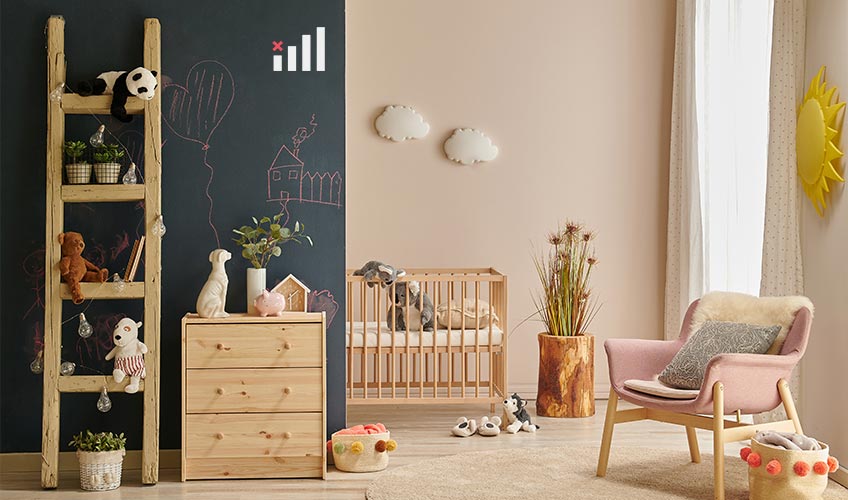
Low-VOC & EMF Paint Guide for Kids’ Rooms
When choosing paint for your child’s room, safety matters as much as color. Many parents focus on bright, cheerful walls but overlook what’s in the paint itself. If you’re concerned about indoor air quality and electromagnetic exposure, this guide is for you.
We’ll walk you through low-VOC and EMF-blocking paints and explain why they’re smart choices for your kids’ spaces.
What Makes Paint Safe for Kids?
Kids spend a lot of time in their rooms. They sleep, play, and grow in that environment. Choosing the right paint helps protect their health. Here’s what to look for:
- Low-VOC or Zero-VOC: Volatile organic compounds (VOCs) are chemicals that release fumes as paint dries. They can cause headaches, respiratory issues, and allergic reactions.
- Non-toxic ingredients: Look for paints free from harmful solvents, heavy metals, and formaldehyde.
- Durable finishes: Walls in kids’ rooms need frequent cleaning. Choose a finish that’s easy to wipe down without chipping or fading.
See our full guide to the best paints for kids’ rooms for more details on safe finishes and brands.
What Is Low-VOC Paint?
Low-VOC paint contains fewer chemicals than traditional formulas. These paints reduce indoor air pollution and odor. Many major paint brands offer low-VOC or zero-VOC options.
Benefits:
- Improves indoor air quality
- Reduces allergy and asthma triggers
- Safe for pregnant women and children
Look for labels that say “GreenGuard Gold Certified” or meet LEED standards. These paints often perform just as well as regular formulas.
What Is EMF-Blocking Paint?

Electromagnetic fields (EMFs) come from Wi-Fi, cell towers, smart meters, and household electronics. While research is ongoing, some families prefer to reduce exposure in sleeping areas.
EMF-blocking paint contains carbon or other shielding elements that create a conductive barrier. When grounded properly, it can block certain radio frequency signals.
Scientific studies support the use of carbon-based paints for electromagnetic shielding. One review highlighted their effectiveness in architectural coatings for reducing RF exposure indoors. Read the study here.
Learn more in our detailed post: What is EMF Paint?
Should You Use Both Paint Types Together?
Yes. You can combine EMF paint (as a primer layer) with a top coat of low-VOC color paint. This gives you both shielding and a decorative finish.
Recommended Uses for Kids’ Rooms
- Walls near electronics: If your child’s room shares a wall with a smart meter or Wi-Fi router, EMF paint can help.
- Bedrooms in urban areas: In dense cities, shielding may provide extra peace of mind.
- Nurseries and toddler rooms: Start with the safest setup from day one.
Application Tips
- Hire a professional: EMF paint requires proper grounding. Tilo Martin Painting is trained in applying both types.
- Prep matters: Clean, dry surfaces ensure better adhesion and results.
- Ventilation is key: Even low-VOC paints benefit from fresh airflow during application and drying.
Ready to Get Started?
Paint isn’t just about color. It’s a part of your child’s daily environment. Choosing safe paint makes a real difference.
Whether you’re designing a nursery or updating a preteen’s room, we’re here to help you make informed choices.
FAQs
What does low-VOC mean?
Is EMF paint safe to use in kids' rooms?
Can I use EMF paint in just one room?
How long does low-VOC paint take to dry?
Can I paint over EMF paint?
Need help choosing the right products or want us to handle the application? Contact us today for a consultation.



